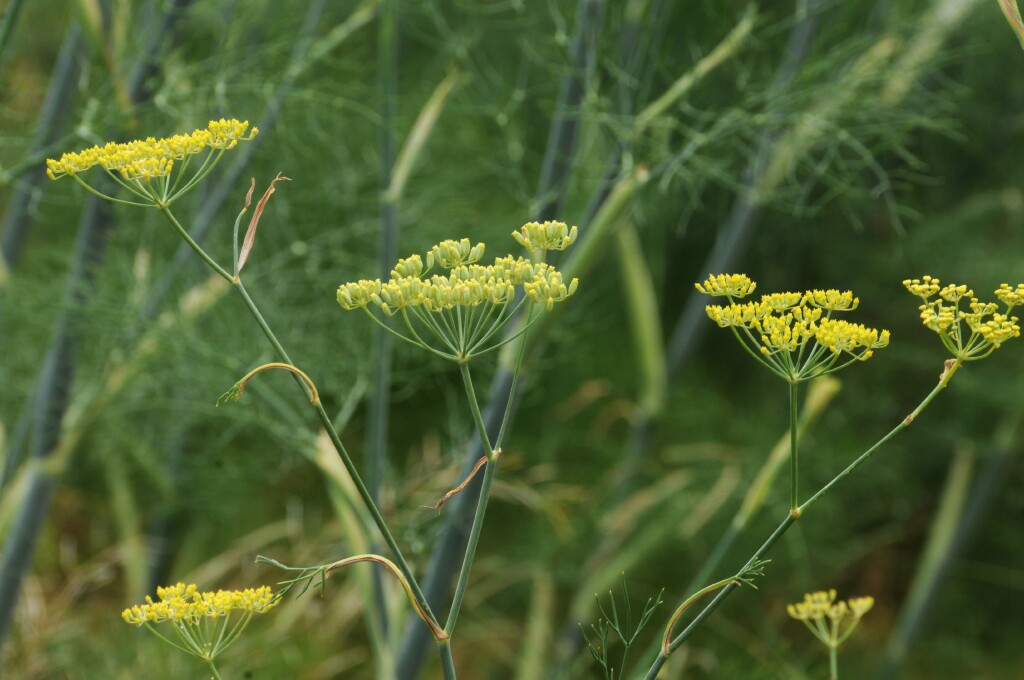Foeniculum vulgare
Mill. FennelErect, strongly aniseed-scented, biennial or annual herb, 1–2.5 m high; stems robust, striated, usually glaucous. Leaves basal and cauline, to c. 50 cm long, feathery, repeatedly dissected; segments 0.5–8 cm long, to c. 0.5 mm wide. Compound umbels 7–15 cm diam.; common peduncle to 12 cm long; rays 8–30, to 7 cm long; umbellules 5–15 mm diam., 10–30-flowered; pedicels 1–7 mm long. Petals c. 1 mm long, yellow. Fruit ovoid-oblong, 4–7 mm long; mericarps dorsally flattened. Flowers spring and summer.
MuM, Wim, GleP, Brid, VVP, VRiv, RobP, MuF, GipP, OtP, WaP, Gold, CVU, DunT, NIS, EGL, EGU, HSF, HNF, Strz. Naturalised all States except NT. Native to Eurasia. A widespread and locally dominant weed of wastelands, along roads, railway lines and watercourses.
In Tasmania grown commercially for oils, otherwise cultivars grown for vegetable, herb, spice or medicine production. 'Florence Fennel' the form grown for its broad, fleshy petioles is var. dulce (Mill.) Thell.
Duretto, M.F. (1999). Apiaceae. In: Walsh, N.G.; Entwisle, T.J., Flora of Victoria Vol. 4, Cornaceae to Asteraceae, pp. 256–258. Inkata Press, Melbourne.
 Spinning
Spinning



